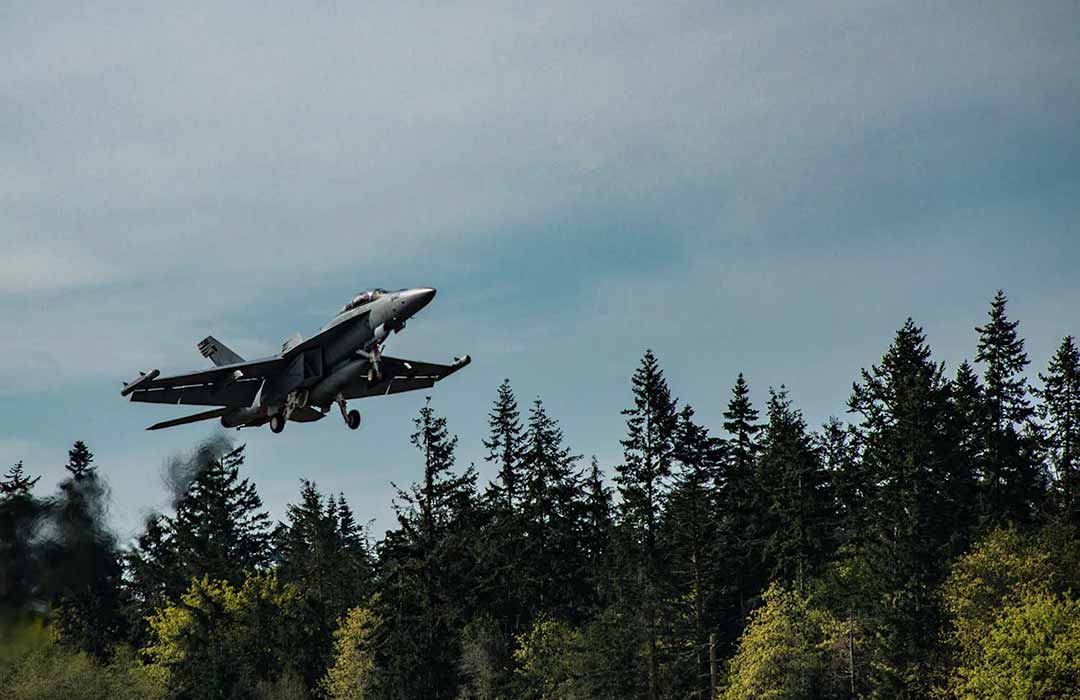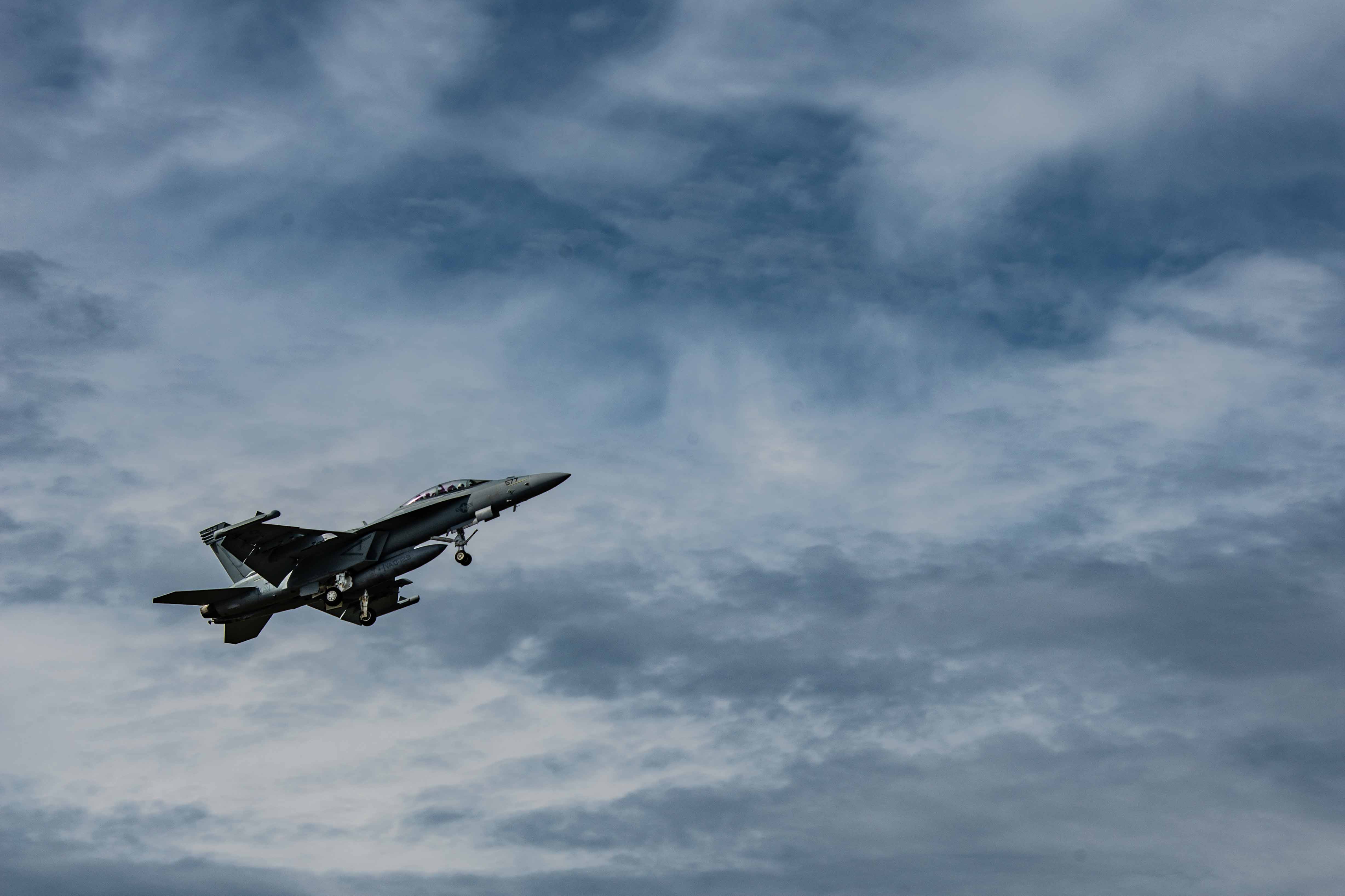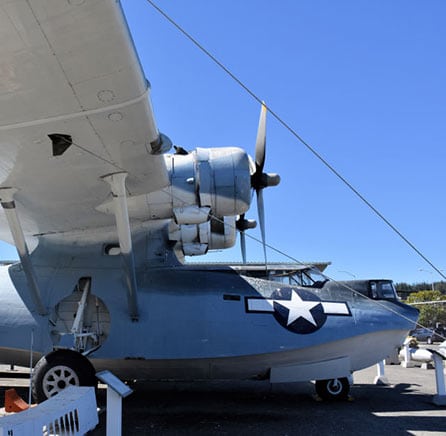
Naval Air Station (NAS) Whidbey Island
Carrier Training and Schedules
During your visit to Whidbey and Camano Islands you might hear and see Navy jet aircraft conducting training and other operations.
Jets from the U.S. Navy’s NAS Whidbey Island train year-round. It’s hard to miss them as they fly around and over the area. For the most part, the jets are training to land on aircraft carriers. Of course, they don’t start their training on an aircraft carrier, they start at bases like NAS Whidbey and the Outlying Field (OLF) near Coupeville. They also do other ongoing training, as well.
Jet Carrier Training Schedule
Schedules are announced on Thursday or Friday for the next week’s operations.
Updated 4/25/24 at 3:13 p.m.
| Date | OLF – Coupeville | NAS Whidbey |
|---|---|---|
| Monday – April 22 | None Scheduled | None Scheduled |
| Tuesday – April 23 | None Scheduled | None Scheduled |
| Wednesday – April 24 | None Scheduled | None Scheduled |
| Thursday – April 25 | None Scheduled | None Scheduled |
| Friday – April 26 | None Scheduled | None Scheduled |
| Saturday – April 27 | None Scheduled | None Scheduled |
| Sunday – April 28 | None Scheduled | None Scheduled |
| Monday – April 29 | Early Evening to Late Night | None Scheduled |
| Tuesday – April 30 | Early Evening to Night | None Scheduled |
| Wednesday – May 1 | Early to Mid-Afternoon | None Scheduled |
| Thursday – May 2 | Early Evening to Late Night | None Scheduled |
| Friday – May 3 | None Scheduled | None Scheduled |
| Saturday – May 4 | None Scheduled | None Scheduled |
| Sunday – May 5 | None Scheduled | None Scheduled |
❗️The schedule is subject to change without notice.
❗️This is JUST the Carrier Training Schedule. There are other flights every day at the main base.
Landing on a Carrier in the Day and Night
Embrace Whidbey and Camano Islands provides this page as a service to visitors and residents. We do so without taking sides on the issue but with the idea that an informed public is the best way to create quality public policy.
Frequently Asked Questions
Whidbey Island has been the home of Naval Air Station (NAS) Whidbey Island since 1942. The Outlying Landing Field (OLF) in Coupeville was built and put into use the following year. In 1967 the Navy determined that OLF was an ideal location for pilots to hone their skills preparing for landing jets on aircraft carriers. Landing on an aircraft carrier at sea is one of the most challenging activities any pilot can undertake, even more so at night. This training is called Field Carrier Landing Practice (FCLP), a type of touch and go training that is crucial training for pilots preparing to deploy on an aircraft carrier. Over the years, several types of jet aircraft have used OLF Coupeville for FCLP training, the A-3 Skywarrior, A-6 Intruder and EA-6B Prowler. Today, the jet doing this type of training at OLF Coupeville is call the EA-18G, or simply, the Growler.
The EA-18G Growler is a specialized version of the Navy’s Super Hornet. They are the Department of Defense’s only Electronic Attack aircraft. Their mission is to control what’s called the electronic spectrum and deny, degrade, or delay an adversary’s ability to use this spectrum to communicate and target American and allied forces.
A Growler Touch and Go at OLF Coupeville
NAS Whidbey Island is one of the few Naval Air Stations on the West Coast, and the Navy’s most northern air station in country. This is an ideal jet training location for several reasons and OLF Coupeville is ideal for training how to land on an aircraft carrier; it is located at relative sea level, has minimal surrounding lighting at night and is close to the main airfield in Oak Harbor. This jet training must, as closely as possible, simulate what pilots would encounter at sea when landing on an aircraft carrier.
The Navy prefers to use OLF for FCLP training due to its site advantages. Ault Field lies in a valley. The surrounding terrain forces the pilots to fly at higher altitudes than at OLF which degrades training. Additionally, FCLP training has impacts on other types of operations out of Ault Field, which is a busy, multi-mission base. When FCLP training is conducted at Ault Field other types of operations are delayed. Ault Field is also used as a backup during inclement weather.

Night flights are needed to help our pilots prepare to land on aircraft carriers at night. Landing on an aircraft carrier is challenging; landing at night, when there is little light, takes even greater skill. It is important that jet pilots practice both day and night and in all weather conditions to ensure they are effectively prepared when they deploy to an aircraft carrier. Qualifying to land on aircraft carriers is a perishable skill, one that requires requalification when not conducted after a short period of time. Watch the video on this page to see how truly difficult landing at night is.
Carrier Landing, training is conducted in 45-minute blocks of time. The frequency of use depends upon what’s needed at a particular point in time; needs that can be dependent upon global events. The Navy seldom conducts training flights at night past midnight, unless there is something unusual happening.
National defense requirements and world events can have significant impacts on training frequency. It is uncommon for flights to happen more than three consecutive nights.
The Navy tries to complete its weekly training at OLF Coupeville by Friday evening. The Navy has used OLF Coupeville on weekends only a handful of times in the past decade. However, world events could very well force the Navy to change that unofficial policy. If that does happen, the base will engage with and inform surrounding communities about that change.
We know that not everyone reacts the same to training flights, but what helps is to understand more about their importance. If you want to learn about NAS Whidbey Island, please visit their website.
Visit the Pacific Northwest Naval Air Museum!
The original reason the Navy chose Whidbey Island is they needed a base for their seaplane, the PBY Catalina! This Oak Harbor Museum even features an original plane!

